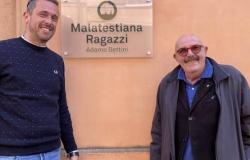An interesting study trip of historical memory in the city of Trieste was the deserved prize for four students from Lagrangiabetween winners of the Contemporary History Project organized by the Resistance and Constitution Committee of the Piedmont Regional Council.
The jury wanted to reward the outstanding research work carried out by the four girls on an issue of gender discrimination that occurred in the 1960s in the Biella area. In a podcast, the students told the story of Mary Ceria, a textile worker from the Biella area, who filed a lawsuit against the company where she had worked, contesting the disparity in pay between men and women for the same job. Mary Ceria won that case, thus setting a precedent that hundreds of other textile workers relied on to take legal action against their employers.
From 15 to 18 March therefore, Susanna Ardito, Eleonora Boroni, Francesca Paini and Giulia Sabatinofrom the class 5AB of the Classical High Schoolaccompanied by Professor Grazia Brugnetta, took part in an itinerary that allowed them to see the places and delve deeper into the events linked to the eastern Italian border.
The travel experience was enriched by the invaluable guidance of Professor Enrica Bricchetto of the Historical Institute of the Resistance of Turin and by the presence of other students from Piedmontese schools, with whom the four students shared not only moments of cultural enrichment but also of leisure and entertainment in the streets of Trieste.
In the city of Bruno Vasari, Umberto Saba, Italo Svevo and Claudio Magris, students were offered the opportunity to visit the “Kleine Berlin” complex, which consists of a public anti-aircraft tunnel for the civilian population and a German military anti-aircraft shelter , the San Sabba Rice Mill, a rice husking plant used by the Nazis, after 8 September 1943, as a prison and sorting camp for deportees headed to Germany and Poland, as well as the only Nazi extermination camp on Italian territory, the Basovizza Foiba, on the border between Italy and Slovenia, a mining well used, like other karst pits in the area, by Yugoslav troops in 1943 and 1945 for the killing of thousands of Italians, the castle and cathedral of San Right, rich in history and culture, the castle of Duino, which from 17 May 1945 was the seat of the English Allied Command, and its underground bunker, and finally the Crp of Padriciano, the only museum of national character set up inside a Crp decommissioned which preserves the original structure unchanged and documents the living conditions in which thousands of Istrian, Julian and Dalmatian exiles were welcomed and reconstructs their environments and daily life.
The trip was an opportunity to experience the atmosphere of a city at the crossroads of different cultures and therefore culturally dynamic and lively, but also to reflect on the difficulties of coexistence between different cultures and ideologies.





